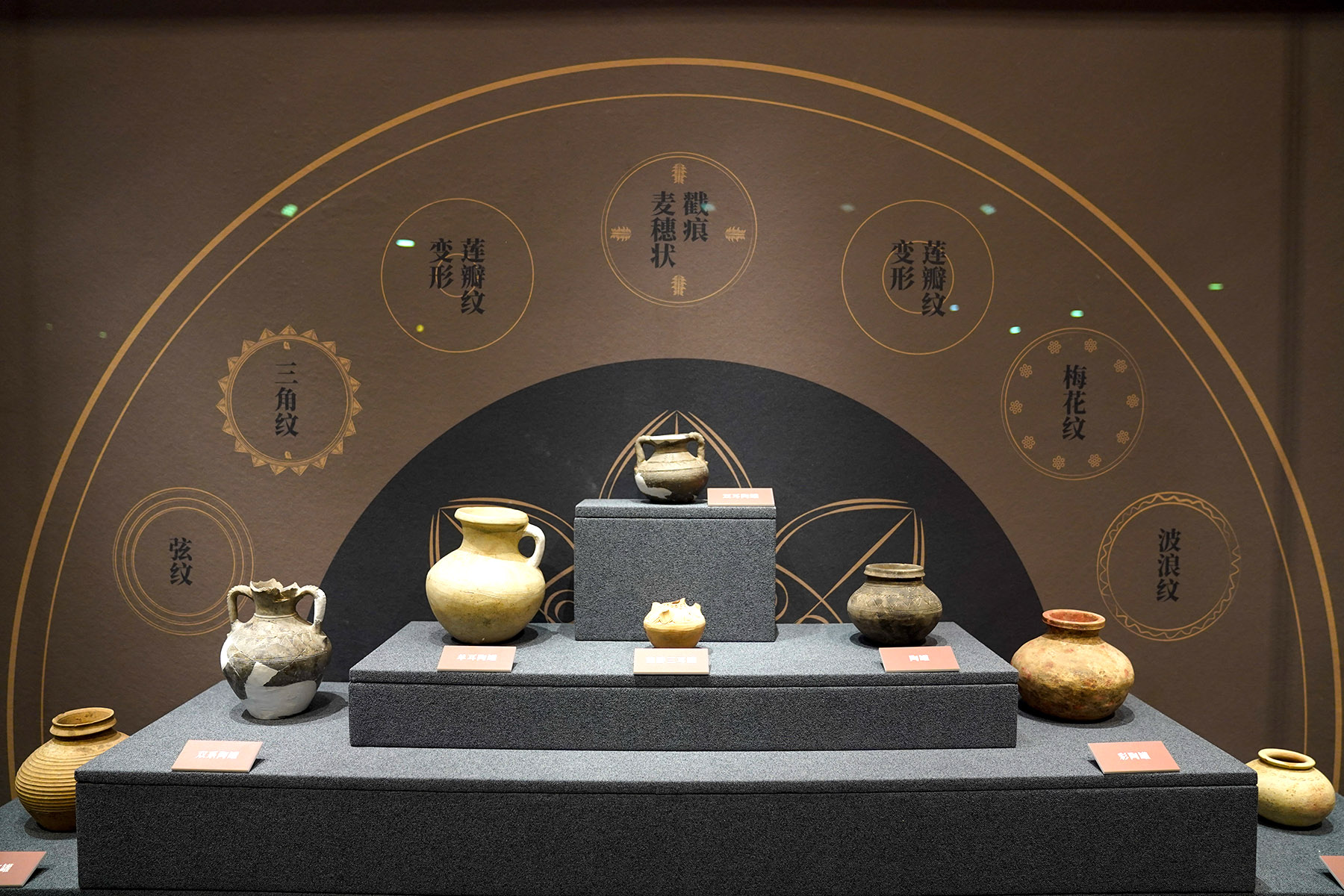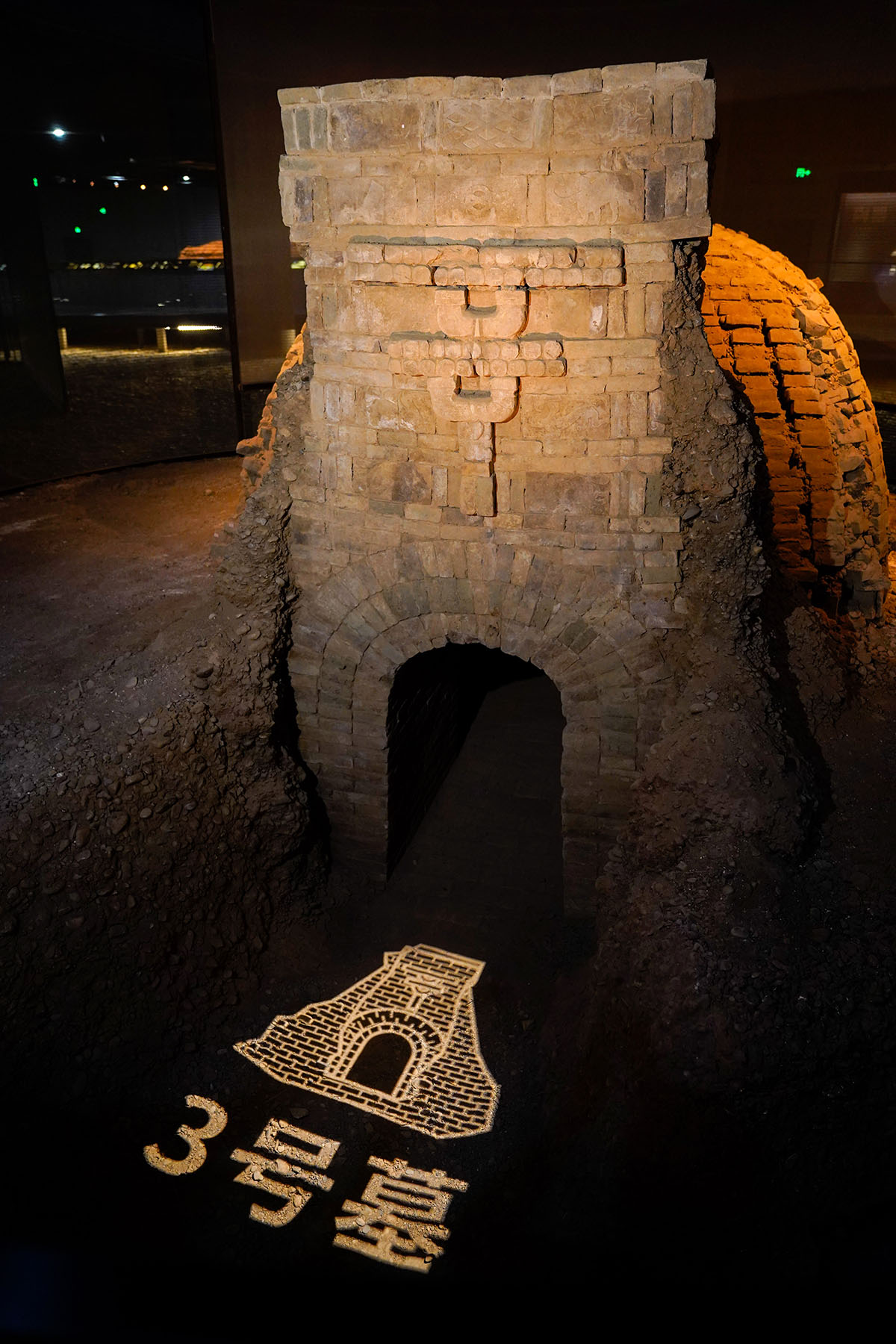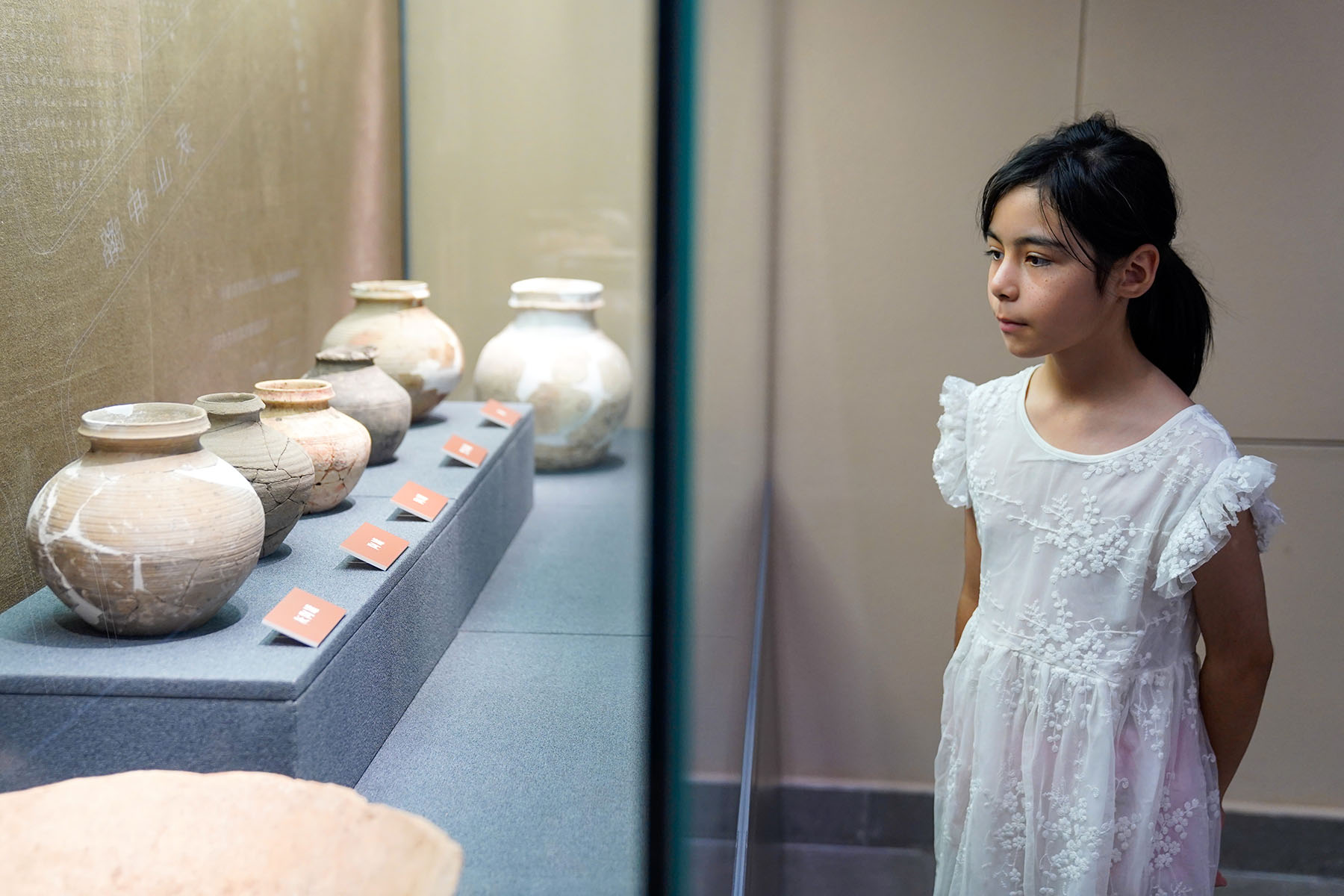Structure provides new insight into a once thriving and pivotal society, Mao Weihua in Urumqi and Chen Meiling report.

A newly opened museum at an ancient tomb site in the Xinjiang Uygur autonomous region allows visitors to observe a key ancient city state on the Silk Road from up close.
Visitors thus learn about social structures, religious beliefs, artistic styles and daily life of the state, known in ancient documents as Qiuci, or as Kucha.
The Qiuci Wei and Jin Ancient Tomb Site Museum, built underground in the downtown area of Kuqa city in Aksu prefecture, officially opened to the public on July 15. By building the museum on the actual site itself, fragile remains can be better preserved from damage, according to the museum.
READ MORE: Heritage faces growing weather threat
Qiuci was a city-state oasis on the southern edge of the Tarim Basin that dates back to the Western Han Dynasty (206 BC-AD 24). Due to its environmental and geographical advantages, it occupied a special position in cultural exchange in today's Xinjiang region, and even across the Eurasian continent. It had close political and economic exchanges with dynasties in the Central China Plains region, which governed the oasis from the Western Han period.
When they were unearthed, they were the first Han-style brick chamber tombs identical in structure to those found in the Central China Plains region and the Hexi Corridor, part of the ancient Silk Road in northwestern China, to be discovered in Xinjiang.
The tombs have provided evidence of governance and administration by the central dynasties over present-day Xinjiang and serve as a valuable testament to the interaction among different ethnic groups from between the 3rd and 6th centuries, including Wei (220-265) and Western Jin (265-316) dynasties and following periods, when many small states rose and fell.
Due to their significant role in historical research, the tomb complex was listed as one of the top 10 archaeological discoveries in China in 2007.

The 15 brick chamber tombs on show have clear features, such as tomb doors, corridors and burial chambers. Doors are adorned with carvings, and the lintels feature traditional Chinese mythical creatures, such as Green Dragon (Qinglong), White Tiger (Baihu), Red Bird (Zhuque) and Black Warrior (Xuanwu, tortoise and snake).
Some of the occupants were buried with coins in their mouths or hands, in the belief that they could take those items to their next life, a reflection of burial customs in the Central China Plains region. The large amount of pottery, bone artifacts, coins and other items buried alongside the tombs also serve as evidence for the close connections between the Central China Plains and the western regions, experts say.
The occupants of the tombs could have been Qiuci nobles influenced by Central China Plains culture, soldiers stationed in the region to guard the borders, or migrants from the Hexi Corridor area, according to research.
"The museum seeks to effectively and accurately disseminate historical knowledge to the public, to uncover historical truth, and better protect and research our precious cultural heritage," says Feng Wei, deputy director of the museum.
Through digital exhibitions, virtual reality experiences, projections on gauze curtains, interactive screens and other digital means, the museum re-creates the customs and way of life of ancient Qiuci, allowing visitors to immerse themselves in the beauty of the artifacts.
For convenience, the exhibition hall has wide walkways and glass sections that allow visitors to see the brick chamber tombs from close up. Additionally, there are an array of multimedia digital image displays, on-site recordings of archaeological discoveries, introductions to artifacts and explanations from archaeological experts. Visitors can also see the internal structure and construction methods of the tombs from multiple perspectives.
Li Junqi, a tourist from Gansu province, was one of the first to visit the museum after its opening. "This is the first time I've seen a museum built on the original site of an ancient tomb, and it provides a truly immersive experience," he says. "The museum design is modern, the exhibits are varied, the explanations are detailed, the guidance is clear and the viewing experience is convenient."
The pattern on top of the No 3 tomb appears to depict a road going skyward. Also displayed are images of the four mythical creatures, and a representation of Xiezhi, a one-horned mythical creature reputed to be able to distinguish between good and bad, which according to Ma Lili, director of the museum, shows the historical value of the tomb.

She adds that as they cleared the tomb out, archaeologists discovered traces indicating secondary use of the chamber. Fine sand had flowed in between the bricks and stones below the chamber, suggesting that it had been opened multiple times.
"What surprised us even more was the presence of the remains of one male and four female individuals, further confirming the chamber's use for family-style burial. The story behind this may be more complex than we imagine, but at present, we are unable to fully verify it," she says.
She adds that the tomb was probably built from top to bottom, starting with a huge pit in which the chamber was then built up gradually, raising the walls until they created a dome. After completion, the tomb would have been covered in soil, leaving only the tomb passage open to admit bodies.
"The bottom extends deep underground, making the structure more secure due to the pressure of the soil layers above. Coupled with a sturdy internal structure, this ensured the stability of the chamber and its long-term preservation," she adds.
The silk and metal products found suggest the backdrop of vibrant trade and a healthy economy. Funerary objects include glazed pottery jars, bronze mirrors, gold-gilt iron hairpins and iron knives, many of which were Central China Plains products of the time, or were made using techniques used in the region.
"They are evidence for studying the cultural exchanges," she says.
ALSO READ: Digging up the Buddhist past
Ma adds that the burials illustrate the management of Xinjiang region by the central governments throughout history, as well as the political, economic and cultural relationships among the various cities and fortresses in this area.
According to the Xinjiang Institute of Cultural Relics and Archaeology, from 2007 to 2023, the site was excavated four times, leading to the discovery of more than 2,000 tombs, stoves, wells and other relics dating from the Spring and Autumn Period (770-476 BC) to the Ming (1368-1644) and Qing (1644-1911) dynasties, along with a large number of important artifacts.
This year, Xinjiang authorities drafted the Three-Year Action Plan for the Protection and Inheritance of Cultural Heritage in the Qiuci Area (2024-26), with the aim of further exploring the historical connotations and values of Qiuci archaeological objects and cultural remains.
Xinhua contributed to this story.
Contact the writers at chenmeiling@chinadaily.com.cn


